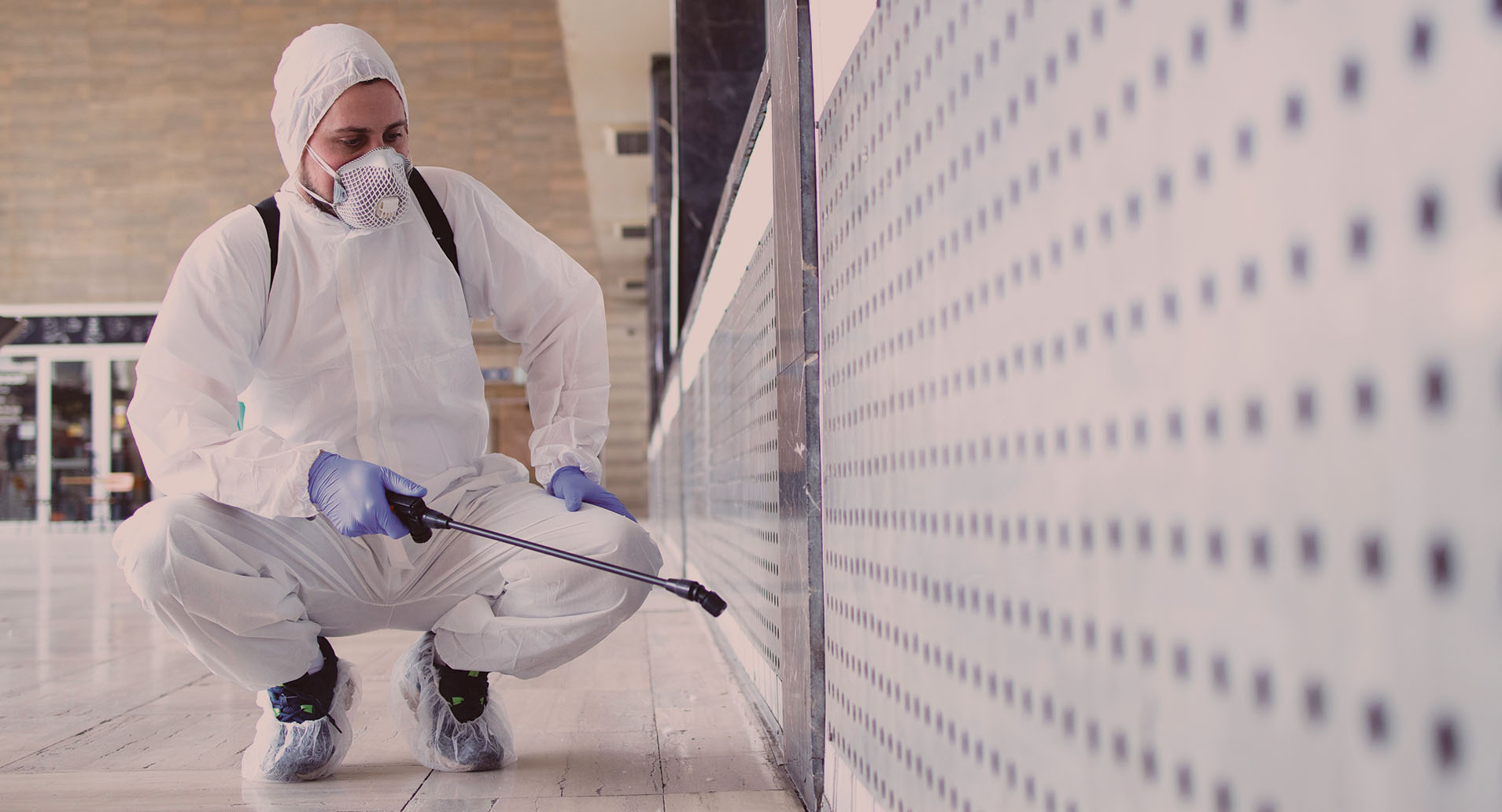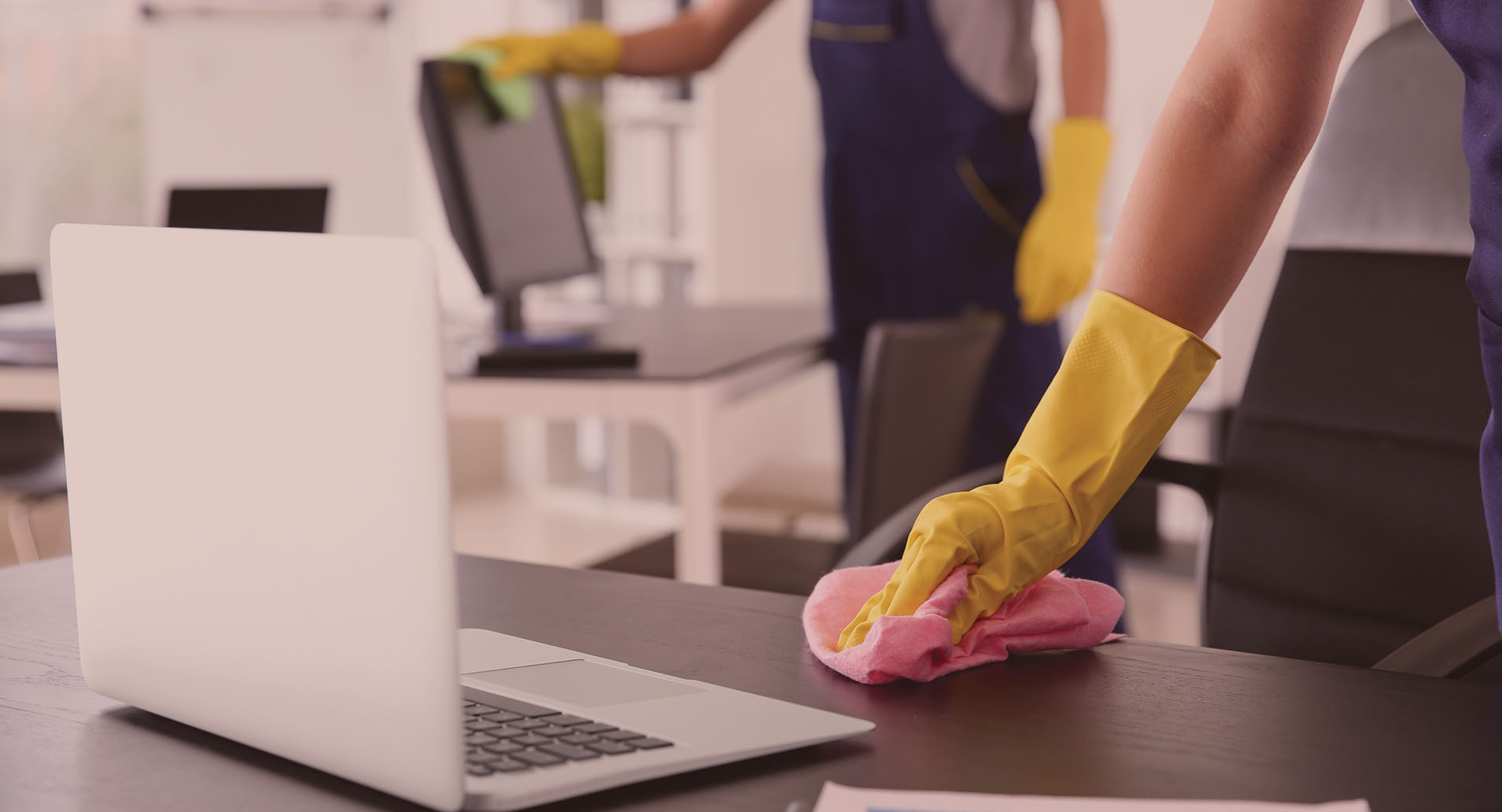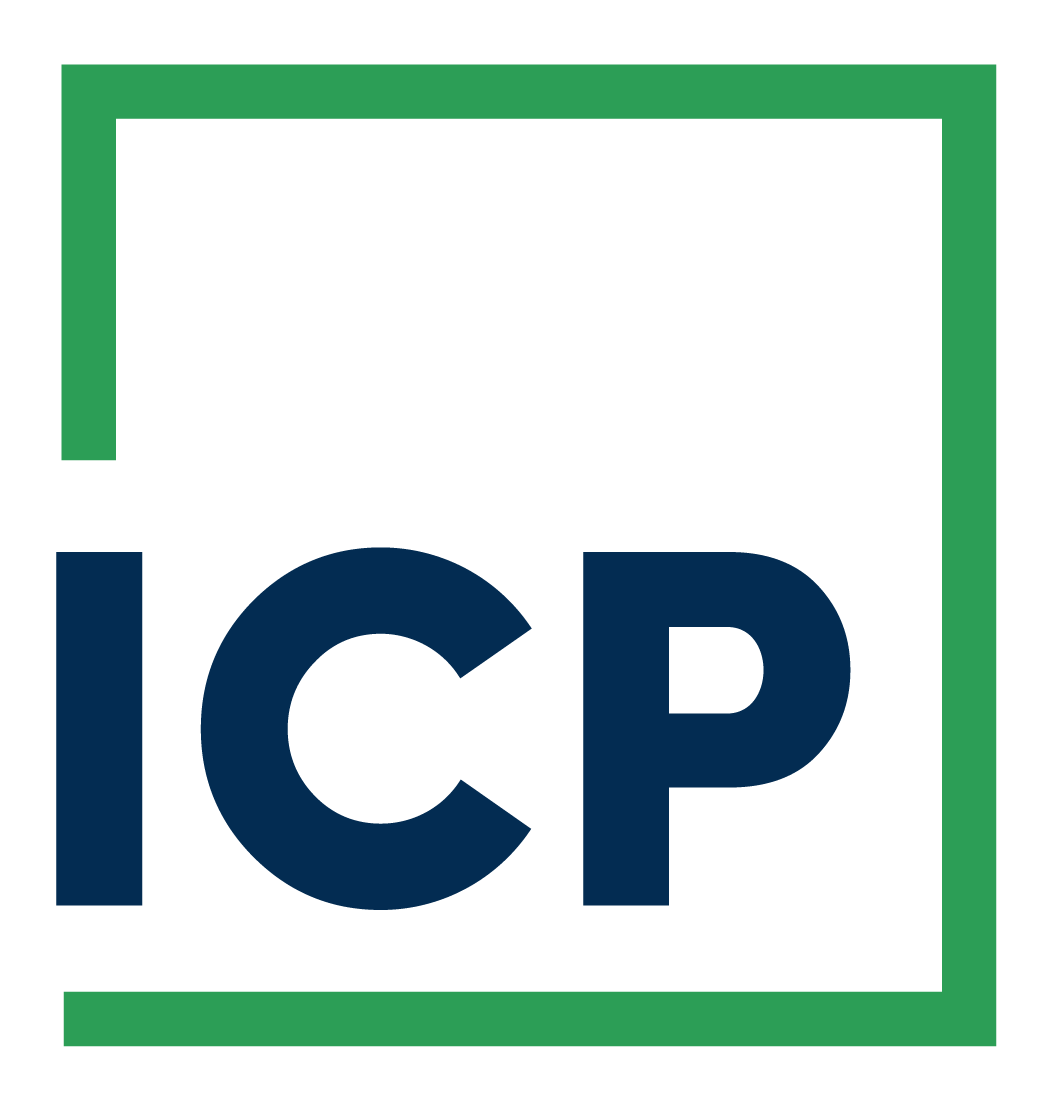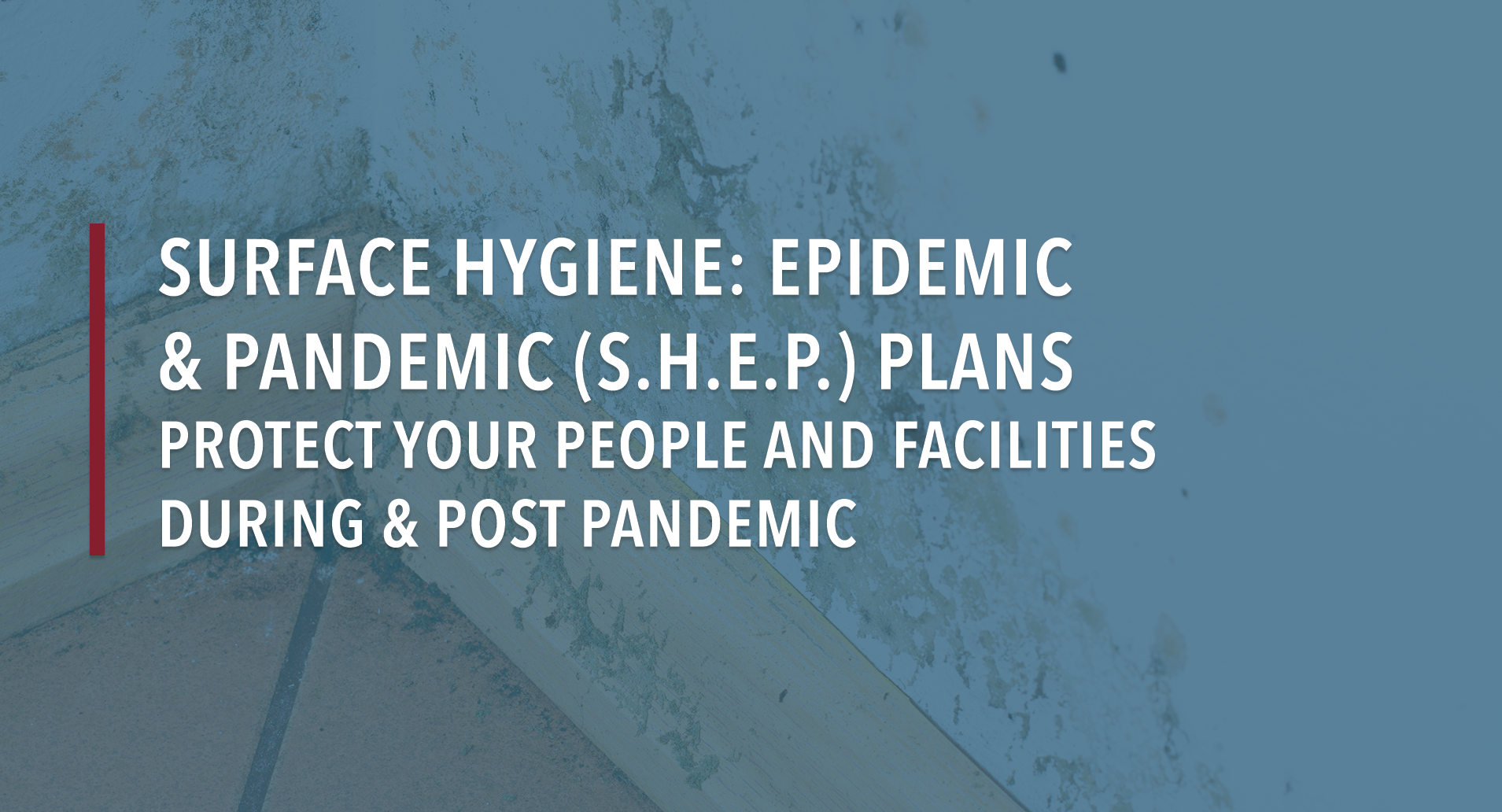Protect Your People and Facilities: Before, During & Post-Pandemic
Surface Hygiene: Epidemic & Pandemic (S.H.E.P.) Blog – Post 1 of 4
Having realistic, clearly defined plans and key performance indicators to define your success is essential to every organization. The same principle applies when dealing with pandemic or epidemic, which are increasing in frequency and lethality. To paraphrase joint guidance on CoV-2 in 2020 from the U.S. Environmental Protection Agency (EPA) and the U.S. Centers for Disease Control (CDC), every individual or group responsible for an indoor environment where our people live and work must engage in three fundamental steps: Make a Plan, Implement the Plan, and Never Stop Revising the Plan. Surface Hygiene: Epidemic and Pandemic (S.H.E.P.) Plans are imperative in any facility, and after the CoV-2 pandemic, we better appreciate the dangers of extraordinary outbreaks, as well as the cost of preventable “ordinary” occupant sickness. We will introduce the mission of SHEP, the definitions, the importance of these plans, and how to develop and implement these plans tailored to each facility.
First let us start with both the concept and some basic definitions of S.H.E.P:
The acronym itself is a jumping off point. At ICP, we have been involved with contingency planning for disaster and epidemic since 2005. And regarding just surface disinfection, there is a lot to remember that goes into emergency response. Whether that emergency is a hurricane coming ashore or a breakout of infectious disease, information is crucial. There is often too little, some “facts” are wrong, and there is a lot of noise during a stressful time. SHEP is a concept created at ICP to cut through the noise and teach best practices of surface disinfection that can be flexed to accommodate circumstances. SHEP is both an acronym and a mnemonic device. Acronyms are words made up of the first letters of other words. As a mnemonic device, acronyms help us remember the first letters of items in a list, which in turn helps to remember the list itself. During training, SHEP helps teach cleaning and disinfection. When the event transpires, SHEP reduces hesitation and makes us more responsive.
Surface – So the “S” stands for surfaces. What is a surface in the context of infection control? A touchable location where communicable disease can be transmitted through dermal (skin) contact, and/or carried by touch to avenues of infection like mouth/nose/eyes.
Hygiene – from the dictionary: conditions and practices that promote and preserve health. Hygiene is the discipline of practices and protocols to assure or restore cleanliness.
Epidemic – a widespread disease that affects many individuals in a population. Typically used to describe an unusual outbreak with transmission rates that are upward trending and not completely controlled. Epidemics usually are still a limited geography event compared with pandemic, but what is not stopped as an epidemic can become…
Pandemic – an epidemic over a wide geographical area and affecting a large proportion of the population. Associated with uncontrolled community transmission. Inability to immediately control can be due to an emerging pathogen (viral or bacterial) against which the medical profession has little experience and few intervention treatments or preventatives.

What does S.H.E.P. look like in practice?
S.H.E.P. is the ICP Building Solutions Group (icpgroup.com) concept for healthy environments. S.H.E.P. is based on our experience, technology pedigree, and the irreplaceable expertise based on participation helping combat past pandemics. Focusing your plans based on the S.H.E.P. model will ensure that you are maximizing effectiveness while minimizing any potential risk from disinfectant usage, and that you are constantly evolving your plans to meet the inevitably invasive microbial factors that are beyond our day-to-day norm & that we have little or no control over.
Surfaces are considered primary or secondary transmission vectors for the majority of (but not all) pathogenic microbes that comprise the group most likely to impact your people and facility (view our antimicrobial disinfection efficacy matrix). Therefore, touchable surfaces should be a focal point of consideration when addressing protection plans for your facility. Disease experts refer to these surfaces as fomites, which is defined as any inanimate object that, when contaminated with or exposed to infectious agents, can transfer disease to a new host. These fomites include everything from clothing and utensils to things like furniture and fixtures. Surfaces can be contaminated a variety of ways including through airborne contaminants, and via touch. Note that surfaces can be fixed like a countertop, or mobile like a cart with a handle. Shared items present a range of disinfectant challenges of varied profile and porosity from plush toys to athletic mats.
Humans touch their face, according to the Journal of Hospital Infection, on average 23 times per hour, with contact mostly to the skin, mouth, nose, and eyes. We also touch common objects or shared surfaces such as buttons, door handles, etc. approximately 3.3 times per hour, so surfaces are a crucial cause for consideration & concern.
Hygiene is the discipline of practices and protocols to assure or restore cleanliness. Hygiene is always desirable. In fact, in buildings where human beings share an environment, hygiene should be mandatory. Certainly, after this pandemic those who are responsible for our built environment will be held to a higher hygiene standard then perhaps ever before. Hygiene becomes critical in a time of great infection. Consider a nexus of surfaces, a microbe that readily spreads via fomites, and uncontrolled community spread risking oversimplification, that means:
- more infected people are depositing more potentially infectious microorganisms on surfaces that can be touched,
- which in turn creates a numbers game or raw probability dynamic. Any touch on any g touchable shared surface might be a touch sufficient to carry a dose to the body of a previously uninfected person. So, when we have “red communities” and uncontrolled spread then hygiene needs to be enhanced or ramped up to reduce a dosage probability inherent in that numbers game.
Epidemics happen frequently and need to be addressed with layered mitigation locally to prevent growth of the outbreak. During the pandemic in 2020-2021, a concept we repeatedly introduced to the thousands that attended our education programs, is that the mitigation steps being taken and the knowledge and appreciation underpinning that mitigation, that all needs to carry forward once the pandemic is over. Those steps and skills are both integral to a healthy indoor environment, as well as being the best preparation for the inevitable next emerging pathogen outbreak. To keep it simple and memorable, it was taught as: we will need this knowledge again. With all we have learned from CoV-2, is that we should now be better with a more universal understanding of what is required to maintain a healthy environment the next time there is a meningitis outbreak at our local University, or a MRSA outbreak in the locker room of our local athletic team, and innumerable similar and local situations.
Pandemics are epidemics that have grown both out of control and to a wide geographical area & affect a large proportion of the population. Pandemics are often caused by a new microorganism against which we had little previous knowledge and no immunity. Pandemic, albeit thankfully rare, is included in the S.H.E.P. concept because there will be future episodes when nature leans into the SARS playbook. Few try to dispute that there will be future, even more frequent, zoonotic crossovers of viruses that have pandemic potential. There are bacteria that too have pandemic potential not to mention antibiotic resistance. According to the University of Minnesota’s CIDRAP (Center for Infectious Disease Research & Policy):
Medical historians tell us there have been nine influenza pandemics in the past 300 years. So, one every 30 to 35 years or so, or roughly three per century, is everybody’s best guess about the future frequency.
The P in S.H.E.P. is for pandemic; but it is also for Prepare.

The Surfaces, Hygiene, Epidemics and Pandemic components of SHEP are insight tools. Separately and altogether, these buckets need to be considered when building your organization/facility’s emergency and customer care plans. Some examples would be to reflect on the types of surfaces you have in your facilities and how many employees & customers enter your business daily? What is the typical customer (outsider) traffic flow in your facility? Do we have adequate controls in place to ensure our facility is meeting hygiene needs? How will a simulated epidemic or pandemic affect the region my business is in? How are we going to communicate these plans to our staff and customers?
Stay tuned for parts 2-4 of our S.H.E.P. blog coming soon!



